Global 5G in healthcare market is estimated to be valued at USD 2.72 Bn in 2024 and is expected to reach USD 22.60 Bn by 2031, exhibiting a compound annual growth rate (CAGR) of 35.3% from 2024 to 2031.
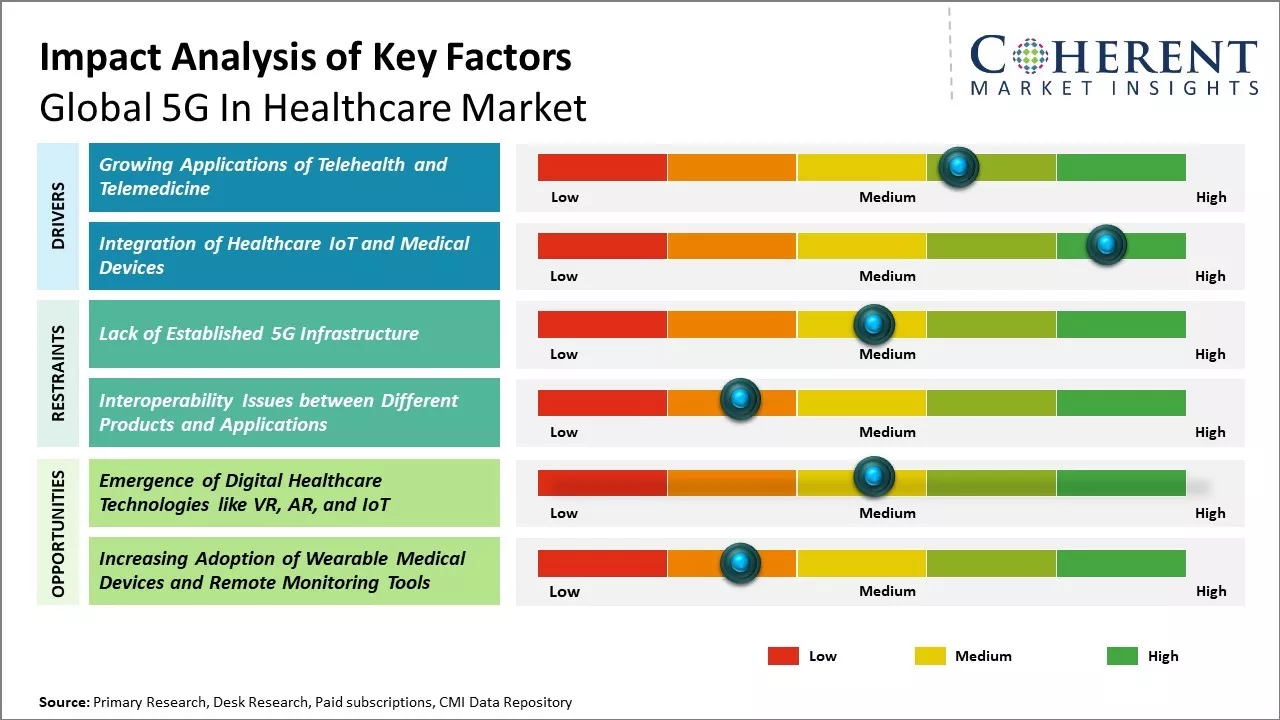
To learn more about this report, request a free sample copy
5G in healthcare market is expected to witness significant growth during the forecast period due to increasing demand for virtual healthcare, rising adoption of telehealth and telemedicine services, increasing investments by healthcare organizations and government bodies to adopt 5G technologies. Real-time health monitoring abilities and improved connectivity offered by 5G is also expected to boost its adoption across various healthcare applications like remote patient monitoring, connected ambulances, AR/VR enabled advanced surgeries, and wearable devices. The availability of high-speed internet through 5G network would allow healthcare organizations to adopt technologies like AI, ML and analytics with greater efficiency.
Growing Applications of Telehealth and Telemedicine
Telehealth and telemedicine services are expected to witness growth significantly with the emergence of 5G technology. 5G enables real-time virtual consultation between patients and physicians through high-definition video calls and transmission of vital health data. This allows people in remote and rural areas to access quality healthcare services without having to travel long distances to hospitals and clinics. 5G's low latency capabilities makes it possible to conduct remote surgeries and procedures by providing surgeons with real-time feedback. 5G networks can support applications like remote patient monitoring which involves continuous monitoring of patients outside of healthcare facilities through wearable medical devices. Chronic disease patients can be monitored remotely for conditions like blood pressure, blood sugar levels, oxygen saturation, and others. This ensures timely detection of health issues and reduces costs for patients and providers. The availability of fast, reliable internet connectivity through 5G is expected to boost adoption of telehealth and telemedicine services globally.
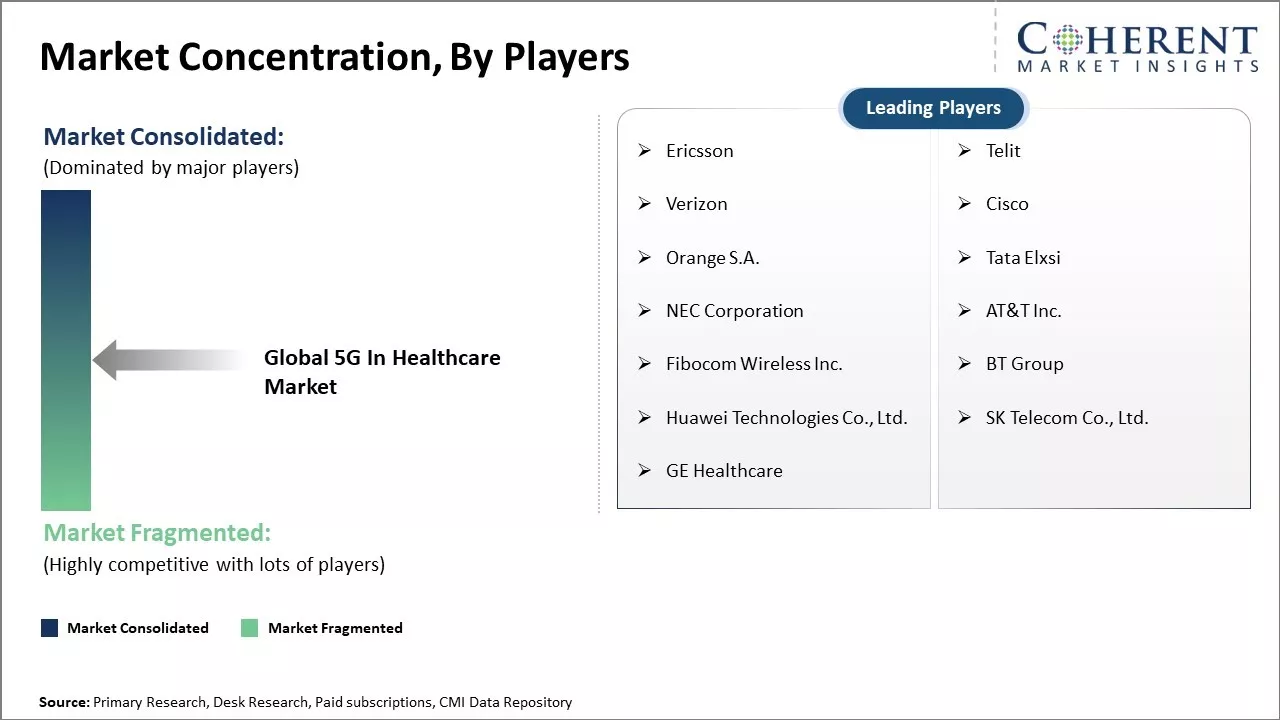
To learn more about this report, request a free sample copy
Integration of Healthcare IoT and Medical DevicesThe integration of internet of things (IoT) devices in healthcare is expected to drive the 5G in healthcare market growth. 5G networks provide the connectivity and bandwidth required to support a large number of connected IoT devices. Healthcare IoT refers to devices such as connected wearables, medical equipment, smart beds and monitoring sensors that generate and exchange huge amounts of data. With 5G, these devices can transmit patient data to doctors, nurses and other healthcare providers in real-time. This facilitates remote and continuous monitoring of patients. 5G also enables fast and reliable connectivity between medical equipment inside hospitals. Integration of IoT makes possible applications such as asset tracking of medical devices, predictive equipment maintenance, remote diagnostics of equipment and streamlining of hospital workflows. Growing number of connected healthcare IoT devices generating large volumes of data boosts the need for high-speed 5G networks in the healthcare ecosystem.
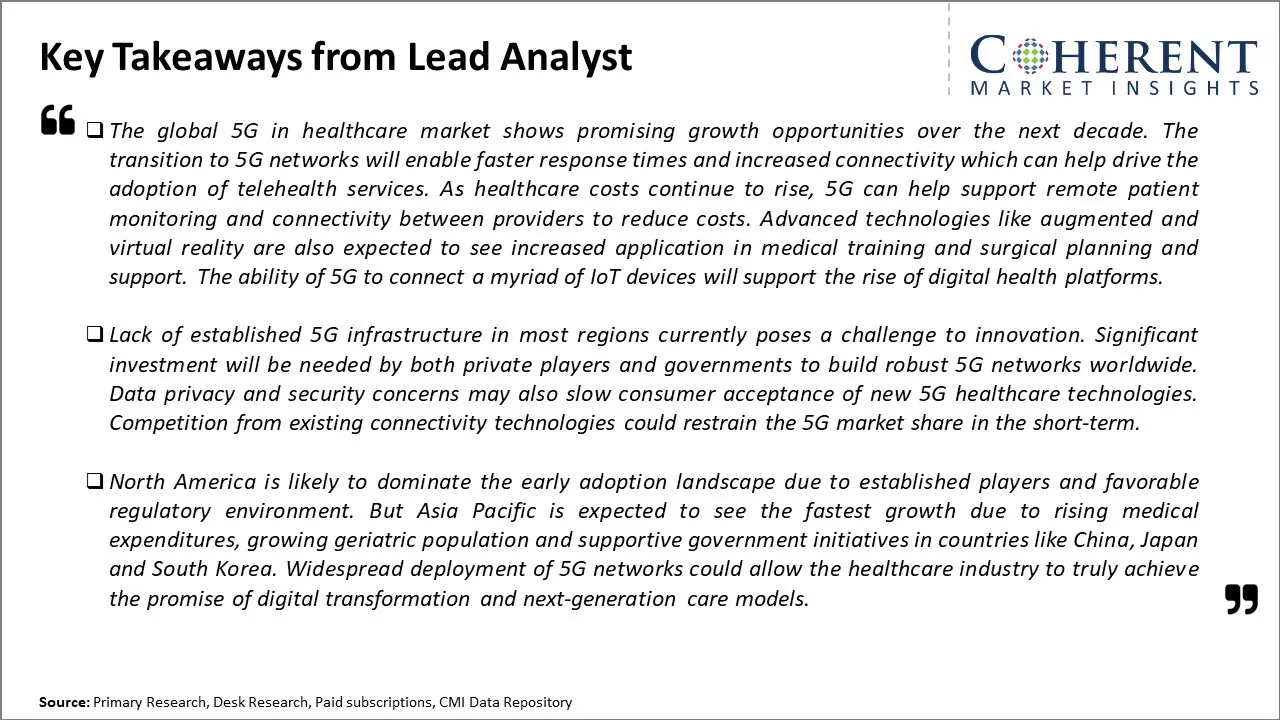
To learn more about this report, request a free sample copy
Market Challenges – Lack of Established 5G InfrastructureLack of infrastructure in many parts of the world to support 5G networks can hamper the market growth. The need for investments to upgrade infrastructure from 4G to 5G can significantly impact the pace of adoption in the industry.
Market Opportunities – Emergence of Digital Healthcare Technologies like VR, AR, and IoT
The emergence and proliferation of technologies like virtual reality, augmented reality and the internet of things have the potential to radically transform the global healthcare industry. 5G networks is a crucial infrastructure that allows these exciting new technologies to fulfill their promise. VR and AR applications can enable new possibilities for remote treatment and training, with doctors able to conduct virtual consultations and examinations.
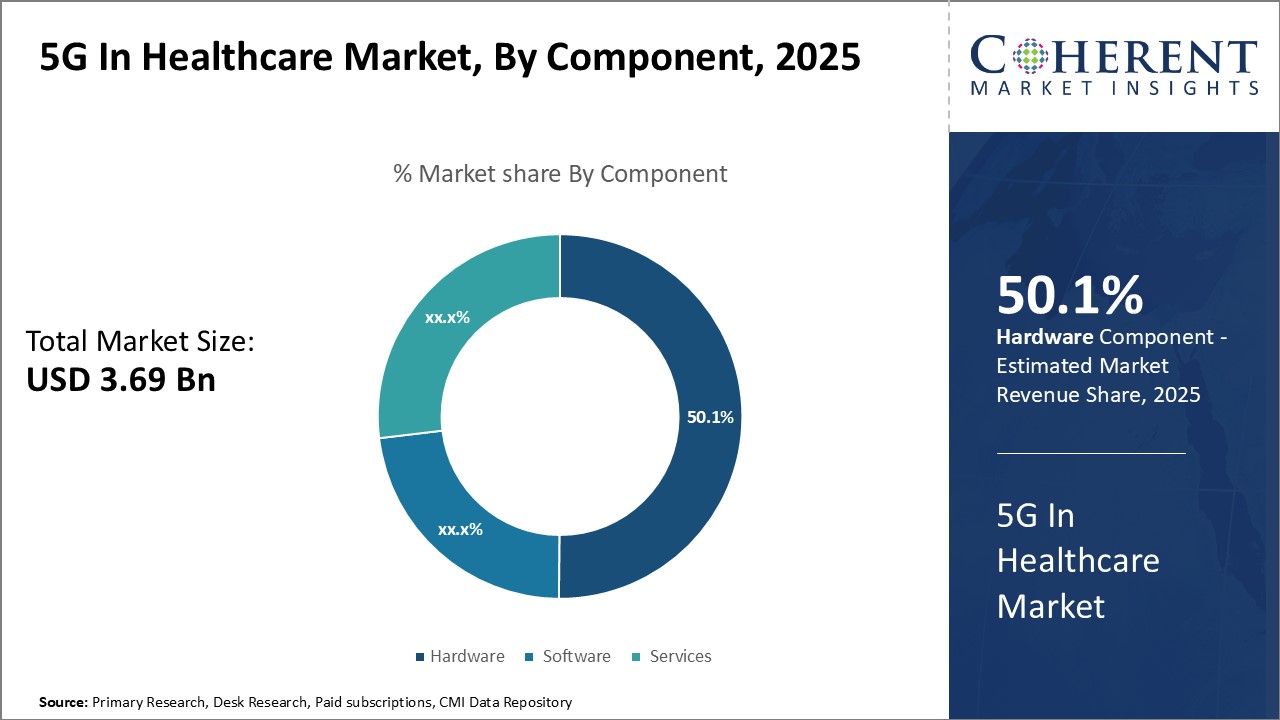
To learn more about this report, request a free sample copy
Insights, By Component: Cost-effectiveness and reliability drives the hardware segment growthComponent segment is sub-segmented into hardware, software, and services. Hardware segment is estimated to hold 49.6% of the market share in 2024, owing to its cost-effectiveness and reliability in delivering stable 5G network connectivity to healthcare providers. As healthcare organizations look to integrate new digital technologies for remote monitoring and real-time communications, hardware such as routers, switches, and base stations have become indispensable for establishing 5G infrastructure. The robust and durable design of hardware also ensures continuous network uptime needed for mission critical healthcare services, thus, boosting reliability and minimizing maintenance hassles.
Insights, By Application: Remote patient engagement drives remote patient monitoring segment growth
Application segment is sub-segmented into remote patient monitoring, connected medical devices, telemedicine, others. Remote patient monitoring segment is estimated to hold 31.4% of the market share in 2024, due to its potential to empower patient engagement and care continuity outside clinical facilities. Fueled by growing focus on patient-centric care models and cost pressures to limit hospital re-admissions, remote patient monitoring allows healthcare providers to partner with patients to self-manage conditions from home. By enabling real-time transmission of vital signs as well as reminders for medication and lifestyle interventions, remote monitoring strengthens engagement between patients and care teams.
Insights, By End User: Provider need to enhance service delivery drives provider demand
End User segment is sub-segmented into healthcare providers and healthcare payers. Healthcare providers segment is estimated to hold 31.9% of the market share in 2024, owing to their need to enhance service delivery and support new care models with 5G connectivity. Healthcare providers are under mounting pressure to optimize resources, expand access to services, and deliver value-based care. 5G assists providers through digital tools that improve clinical workflows, staff productivity and patient experience. It also facilitate adoption of emerging provider-centric models like telehealth, virtual consults, remote surgery and digital health integration. 5G provides the high-speed network healthcare providers require to access and share multi-media medical records, images and real-time patient data. This enables better informed decisions, inter-professional consultations and collaborations beyond physical barriers. 5G will be a key enabler for providers to streamline operations, scale service footprints and evolve how healthcare is provisioned. This makes providers the leading end-user adopters driving 5G infrastructure build-out within the healthcare industry.
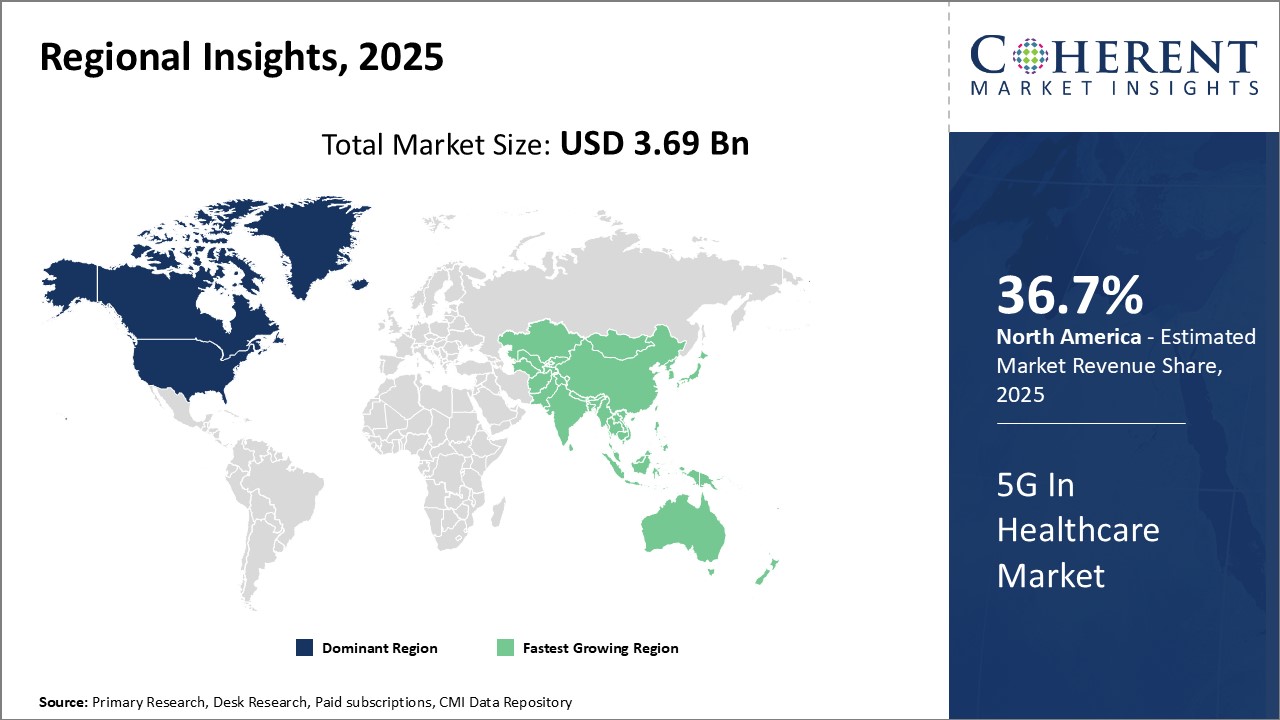
To learn more about this report, request a free sample copy
North America remains the dominant region in the global 5G in healthcare market and is estimated to hold 36.2% of the market share in 2024 due to strong industry presence of leading 5G infrastructure providers and healthcare IT companies. This has enabled North America to develop reliable 5G networks across major hospitals and clinics at a faster pace as compared to other regions. The large healthcare expenditures and supportive regulatory environment provide opportunities for 5G services adoption. Several pilot projects showcased by players like Verizon prove the potential of 5G in improving surgical outcomes, enabling remote surgeries, and powering new health applications.
The Asia Pacific region is poised to be the fastest growing market for 5G in healthcare globally over the next five years. Factors such as rising medical tourism, increasing chronic disease burden, and growing focus on connected healthcare boosts demand. Countries like South Korea, Japan, and China actively promote 5G infrastructure rolling out over the last few years. This positions them well to experiment with healthcare use cases. For example, telemedicine services in South Korea now supplement doctor consultations. Improved connectivity empowers remote patient monitoring across islands in Japan while reducing costs. 5G pilot projects in tier 1 Chinese hospitals are optimizing workflows and powering AR/VR medical training tools. With favorable policies, Asia Pacific's 5G in healthcare market holds immense untapped growth opportunities for players worldwide.
5G In Healthcare Market Report Coverage
| Report Coverage | Details | ||
|---|---|---|---|
| Base Year: | 2023 | Market Size in 2024: | US$ 2.72 Bn |
| Historical Data for: | 2019 to 2023 | Forecast Period: | 2024 to 2031 |
| Forecast Period 2024 to 2031 CAGR: | 35.3% | 2031 Value Projection: | US$ 22.60 Bn |
| Geographies covered: |
|
||
| Segments covered: |
|
||
| Companies covered: |
Ericsson, Telit, Verizon, Cisco, Orange S.A., Tata Elxsi, NEC Corporation, AT&T Inc., Fibocom Wireless Inc., BT Group, Huawei Technologies Co., Ltd., SK Telecom Co., Ltd., GE Healthcare |
||
| Growth Drivers: |
|
||
| Restraints & Challenges: |
|
||
*Definition: 5G in healthcare refers to the application of fifth-generation cellular network technology (5G) within the healthcare industry. 5G promises significantly faster data transmission speeds and lower latency compared to previous cellular generations. This will enable new healthcare applications such as remote surgery, real-time mobile ultrasound, networked robotic assistance, and more through higher bandwidth connectivity between devices at the point of care. The increased network capacity of 5G can help expand telehealth, virtual care and remote patient monitoring services globally.
Frequently Asked Questions
Joining thousands of companies around the world committed to making the Excellent Business Solutions.
View All Our Clients